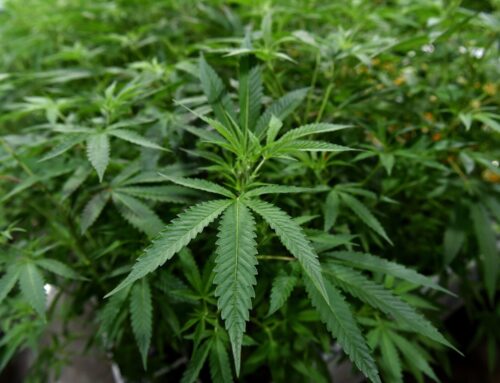Harnessing Data to Optimize the Cannabis Consumer Experience
April 2, 2019
As a burgeoning industry in the era of technological advancement, cannabis has an opportunity to apply new ways of thinking to age-old business problems. The next big problem to solve in cannabis will be to figure out how to connect our plentiful (yet disparate) data sources to help cannabis producers make informed supply chaindecisions that give consumers what they want at the best price.
Nobody needs another tired essay on why data is good for business. Instead, let’s survey of the largest unsolved problem the industry faces over the next decade and how entrepreneurs can build huge businesses solving it. This work will take an industrywide collaboration — and a lot of creativity, cannabis and coffee. Here’s how.
Related: The 3 Data Sets Essential to Establishing Your Cannabis Brand
The puzzle: Consistently connecting cannabis products with the right buyers.
First, let’s understand a few fundamental concepts for context. Humans consume cannabis to feel something: creativity, sleepiness, mind/body balance, pain relief, and so forth. Those effects happen due to various compounds in the cannabis plant interacting with the body ingesting them. This complex interaction between cannabis and the body works through processes known as the Entourage Effect and the Human Effect.
The Entourage Effect refers to how the unique combination of native cannabinoids (THC, CBD, CBG, THCV, etc.) and terpenes (myrcene, terpinolene, pinene, etc.) work synergistically to deliver a particular experience. Plant genetics (strain), cultivation environment (lighting, nutrients, temperature, time of harvest), processing method (curing, extracting, infusing) and consumption method (smoking, vaping, ingesting) are all factors in determining a product’s chemical composition and Entourage Effect. Just as smoking a particular product is often a different experience than vaping the same batch, different batches of the same cannabis strain, harvested by the same producer, will often have different effects.
The Cannabis Experience = Entourage Effect + Human Effect
When someone tries a product, they have an experience, and they either want to buy that product again in the future or not. The Entourage Effect and Human Effect are highly variable factors, so it’s no wonder most people have a hard time finding a consistent cannabis experience. But what if we could change that?
Related: New Data Shows Medical Marijuana Consumers Far Outspend Recreational Users
Objective: Create an optimized consumer experience.
People want to consume the right quantity and ratio of cannabinoids to consistently experience specific desired effects whenever they want, wherever they are, at the right price. But, how should cannabis retailers know which products to stock on their shelves (with thousands of products and strains available) and who will buy—let alone benefit—from each? On the flipside, how should cultivators know what strains to grow or how to nourish plants to enhance particularly desired compounds?
The answers lie in recognizing how the variables of plant and body drive the supply chain (the process of bringing products to consumers consistently). Three variables impact the business behind cannabis:
Products: Which genetics to grow and how to grow them? What products to manufacture and how to manufacture them?
Profit margins: Costs to make the products; wholesale prices; retail prices.
An adaptive supply chain uses consumer feedback to influence decision-making relevant to these three variables and is the only way to truly inform cannabis cultivators, processors, distributors, and retailers on what to make, how to make it, what to charge, where to sell it and who will buy it.
Success in the increasingly competitive cannabis marketplace of the future means cannabis operators must inform and adapt their supply chain with data across these dimensions. Only the businesses that measure and influence the Entourage Effect and Human Effect to adapt their supply chain will optimize the Consumer Experience and win this race. Therefore, this is the formula:
The Optimized Consumer Experience = Entourage Effect + Human Effect + Adaptive Supply Chain
Imagine a world where cannabis growers use plant genetics and cultivation data (temperature, humidity, lighting) to enhance specific chemical profiles in a plant because sales data shows a particular set of consumers prefer those profiles. Processors would know what plant material to buy, from whom, what to pay for it, how to turn it into the best possible products and how to package them to sell. Distributors would make sure those products end up on the shelves closest to the people who seek them. Retailers would attract specific consumers to the products right for them at the most profitable price points. Only with an adaptable supply chain like this will cannabis businesses and consumers truly thrive.
This is not a groundbreaking concept. For instance, Driscoll’s (the leading berry brand), follows consumer trends data — including soliciting direct customer feedback as to why and when people consume berries — to help the company quickly find patterns that enhance their operations. They use data science and analytics to inform their decisions about what berries to bring to market, and the best time of year to grow and sell them. That kind of sophisticated decision-making is exactly what a handful of companies (including ours) are working towards for the cannabis industry.
The Data Is Out There, Now We Must Use It
We have the motivation and tools to solve this puzzle, but have yet to put it all together. The first step is to collect information on the variables mentioned above, but very few businesses have captured enough data to be useful—and none have connected the datasets to implement a complete solution (step two).
Building the infrastructure to make these datasets accessible will quickly level the playing field for all smart cannabis operators and build an ecosystem in which they can thrive. A safe, reliable and transparent market can then finally lead to the end of prohibition.
At some point, someone will optimize the consumer experience and build the next billion-dollar cannabis company. It might as well be you!
Search
RECENT PRESS RELEASES
Related Post




